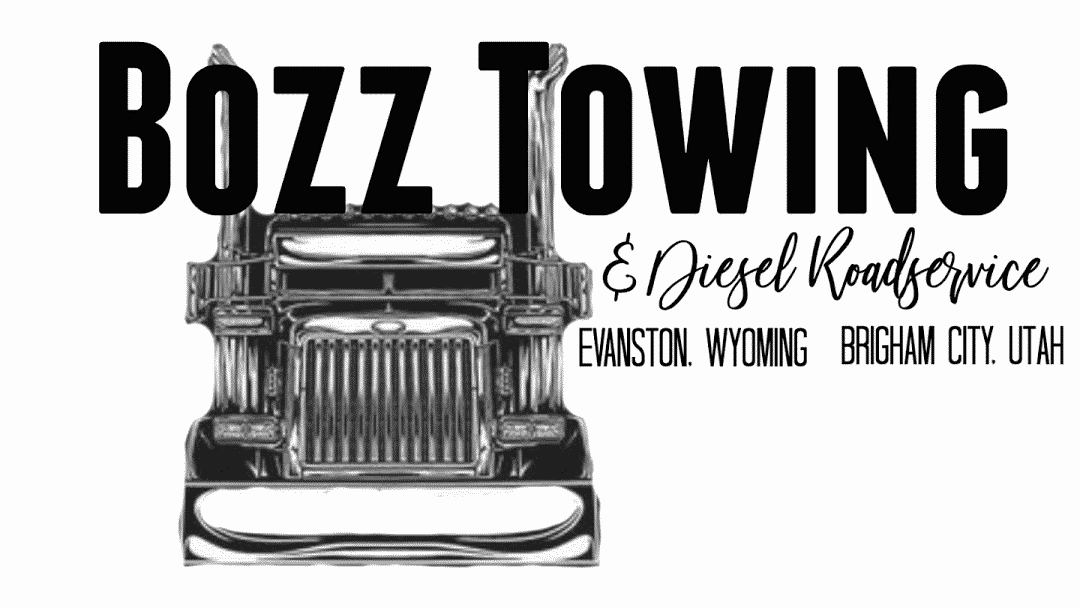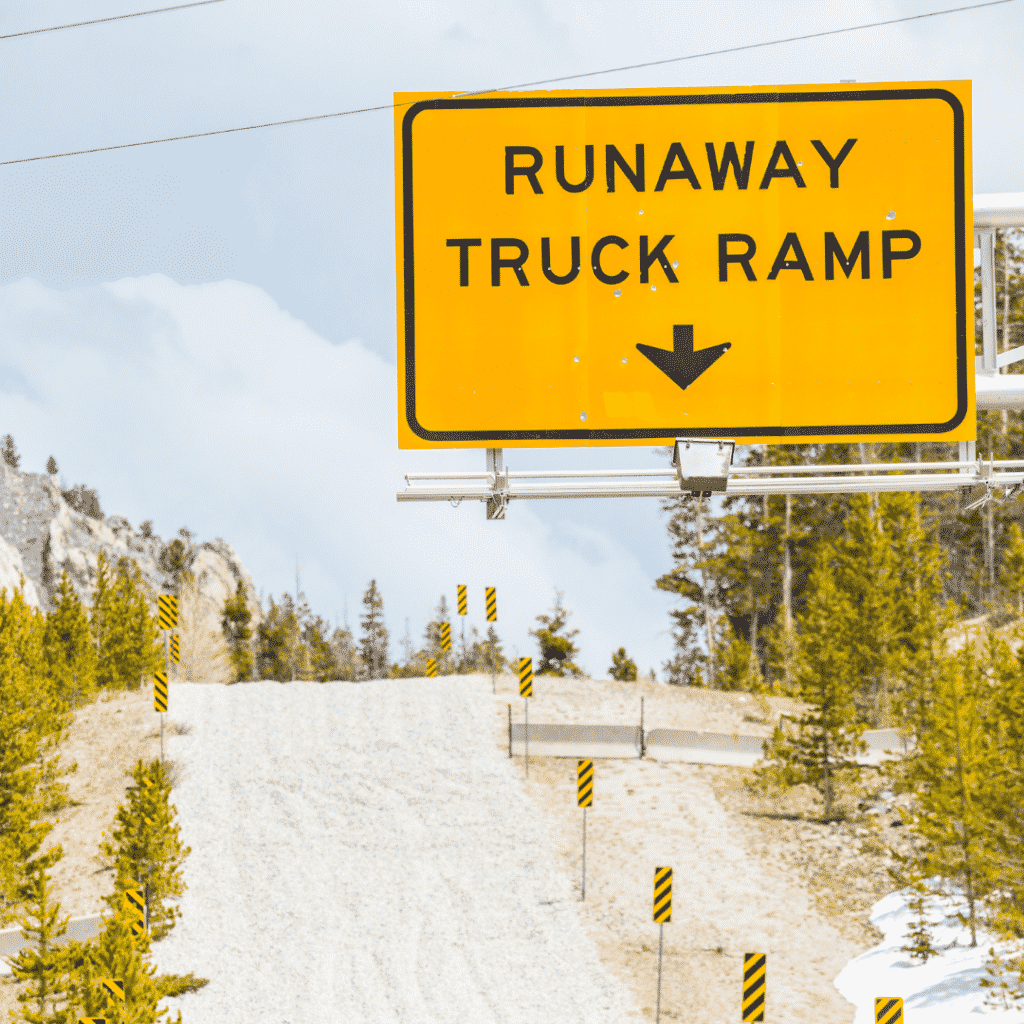Runaway truck ramps are roadside safety devices that help drivers of large trucks and other heavy vehicles to stop quickly in an emergency. They are for use by professional drivers who drive on public highways or roads but can also be helpful for anyone with a heavy vehicle that may take longer than normal to slow down. For those who do not know what runaway truck ramps are, let’s talk about their use and how they work.
What are runaway truck ramps?
A runaway truck ramp, sometimes called an escape ramp, is a safety device that allows drivers of large, runaway trucks and other vehicles to stop quickly in an emergency. Truck escape ramps use sand, gravel, and/or wire nets to slow a heavy-duty vehicle quickly in the event of brake failure. For example, even an experienced and cautious trucker may run into this issue coming down a steep mountain pass. Once those brakes fail, their vehicle becomes unstoppable. Thus, runaway ramps are there to save the day.
Most ramps are at the end of a straight drop before a turn or intersection. As a result, most of these ramps resemble an exit ramp from the highway to a dead-end street.
How do runaway truck ramps work?
These ramps are typically on the side of a mountain, and they work by redirecting the speeding truck away from traffic and into an area where it can safely stop. The angle of these ramps is usually much more gradual than what you would find on a regular highway.
Runaway ramps are sometimes long gravel or sand-filled lanes at the bottom or around a turn of a steep downhill stretch of road. They also frequently include an uphill design to take advantage of gravity’s contribution to slowing you down. The four styles of runaway ramps are as follows:
- Arrester Bed: Arrester beds are gravel inclines alongside roads that use rolling resistance to stop vehicles. They’re filled with round riverbed pebbles rather than gravel, which slows the vehicle down and buries part of the truck until it comes to a complete stop.
- Gravity Escape Ramp: These ramps are long, inclined upward, and parallel to the road. They might consist of gravel, sand, soil, or other material. Because of the potential for rollback, drivers may have difficulties navigating them.
- Sand Pile Escape Ramp: Sandpile ramps are short and made of loosely-piled sand, resulting in cars vaulting or flipping after striking the pile. Sand may also be less effective under wet or windy weather conditions.
- Mechanical-Arrester Escape Ramp: On the other hand, mechanical ramps include a system of stainless-steel nets designed to absorb energy as you step onto them. They are far less steep than gravity ramps, yet they still reduce impact forces and work even on a downhill slope.
What should you do when you encounter one of these ramps on the road?
It is best not to use this ramp unless it’s absolutely necessary for your safety. If there are no other cars around and stopping isn’t an option (for instance, because of steep cliffs), then using one may be your only choice. While these ramps can save your life, they can also be very dangerous.
Remember that these truck ramps are not like regular highway exits; they’re primarily of use to save lives in emergencies involving heavy trucks and other commercial vehicles—not cars. In addition, the angle of the ramp is usually steeper than what you’d see on a typical off-ramp from an interstate or highway (about 12-15 degrees, as opposed to the usual three), so you’ll need to slow down before reaching it.
Who should use runaway truck ramps?
Escape ramps are not simply for trucks. A truck ramp may be used by any car having trouble braking or can’t slow down as it goes down the hill. So, if you think your vehicle’s brakes are failing, use an escape ramp before they fail entirely.
If you’re a truck driver and find yourself in brake failure while descending a mountain pass, use these tips to help you stay safe:
- If possible, try to stop your truck by driving onto the shoulder or into an escape ramp.
- If you can’t stop at the bottom of a hill, make sure to turn off your engine and brake lights so that cars behind don’t try to pass you.
- The most common sign that your truck’s brakes are about to fail is an audible “screeching” sound when you push down on the pedal. If you hear this, immediately pump your brakes to slow down (do not apply steady pressure).
- Another sign that a truck’s brakes are about to fail is if they feel “spongy” or soft when pressed. This means there isn’t much stopping power left in them and could mean an emergency stop at any moment.
Remember that downhill is the most dangerous part of your trip and requires extreme caution on steep roads. If possible, avoid taking heavy vehicles down long hills or mountains; choose an alternate route instead. Also, braking downhill can be very dangerous with no way to stop safely if something goes wrong.
Why should you avoid using them if possible?
Because escape ramps are for absorbing the impact of a truck, using one in any other situation can be both dangerous and ineffective. So, if you’re not driving an 18-wheeler or other commercial vehicle that might go into runaway mode, it’s best to avoid using these ramps at all costs.
The Pros and Cons of Using a Runaway Truck Ramp
If you have to use a runaway ramp in an emergency, what are the pros and cons of doing so?
One advantage is that it can save lives. If your vehicle’s brakes fail while descending a steep hill with no way out, using one could be life-saving.
The most significant disadvantage is that they can be very dangerous. If you’re not driving a commercial vehicle, using one could cause your car to flip or rollover.
Do’s of Using an Emergency Truck Ramp
If you find yourself in a position in which you need to use these emergency safety devices, there are few truck escape ramp dos and don’ts to follow.
When using a runaway truck ramp, do:
- Use the ramp if you are having difficulty using your brakes and/or slowing you experience brake loss.
- Enter the gravel in line with the ramp as close to the center as possible.
- Contact your local towing company to help remove your car from the gravel bed.
- Repair your car’s brakes immediately before driving again.
Dont’s of Using an Emergency Truck Ramp
When using an emergency escape ramp, do not:
- Don’t be afraid to use these ramps if you have concerns about harming your car. Debris-filled gravel beds are less harmful than not using a truck escape ramp. This is because they cause little to no vehicle damage.
- Don’t try to maneuver out on your own. The gravel beds stop runaway cars. Attempting to drive out may only cause more damage to your car.
- Don’t use this paved entry as a stopping point or parking lot. Runaway vehicles are speeding out of control, with limited ability to avoid stopped cars in their path.
- Don’t use this area as a recreational rest spot for your vehicle.
Bozz Towing & Diesel Roadside provides heavy towing and recovery services in Northern Utah and SW Wyoming
When you are stuck at a runaway truck ramp, you will need a heavy towing professional to recover your vehicle. Contact Bozz Towing today for all for Utah and Wyoming semi truck road service and towing needs.

